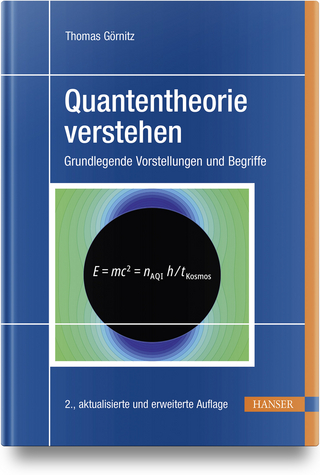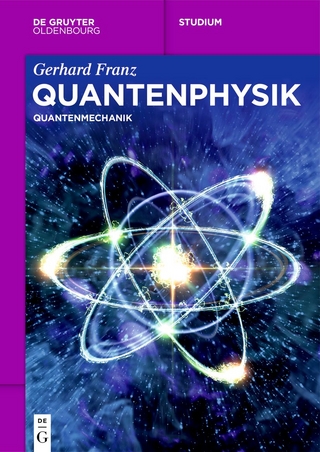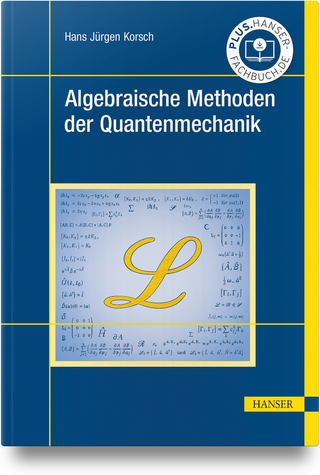
Quantum Chemistry
A Concise Introduction, Second Edition
Seiten
2017
Morgan & Claypool Publishers (Verlag)
978-1-64327-865-0 (ISBN)
Morgan & Claypool Publishers (Verlag)
978-1-64327-865-0 (ISBN)
Provides non-specialists with a basic understanding of the underlying concepts of quantum chemistry. The emphasis of Quantum Chemistry on explaining ideas rather than enumerating facts or presenting procedural details makes this an excellent foundation text/reference.
This book provides non-specialists with a basic understanding ofthe underlying concepts of quantum chemistry. It is both a text for second or third-year undergraduates and a reference for researchers who need a quick introduction or refresher. All chemists and many biochemists, materials scientists, engineers, and physicists routinely user spectroscopic measurements and electronic structure computations in their work. The emphasis of Quantum Chemistry on explaining ideas rather than enumerating facts or presenting procedural details makes this an excellent foundation text/reference.
The keystone is laid in the first two chapters which deal with molecular symmetry and the postulates of quantum mechanics, respectively. Symmetry is woven through the narrative of the next three chapters dealing with simple models of translational, rotational, and vibrational motion that underlie molecular spectroscopy and statistical thermodynamics. The next two chapters deal with the electronic structure of the hydrogen atom and hydrogen molecule ion, respectively. Having been armed with a basic knowledge of these prototypical systems, the reader is ready to learn, in the next chapter, the fundamental ideas used to deal with the complexities of many-electron atoms and molecules. These somewhat abstract ideas are illustrated with the venerable Huckel model of planar hydrocarbons in the penultimate chapter. The book concludes with an explanation of the bare minimum of technical choices that must be made to do meaningful electronic structure computations using quantum chemistry software packages.
This book provides non-specialists with a basic understanding ofthe underlying concepts of quantum chemistry. It is both a text for second or third-year undergraduates and a reference for researchers who need a quick introduction or refresher. All chemists and many biochemists, materials scientists, engineers, and physicists routinely user spectroscopic measurements and electronic structure computations in their work. The emphasis of Quantum Chemistry on explaining ideas rather than enumerating facts or presenting procedural details makes this an excellent foundation text/reference.
The keystone is laid in the first two chapters which deal with molecular symmetry and the postulates of quantum mechanics, respectively. Symmetry is woven through the narrative of the next three chapters dealing with simple models of translational, rotational, and vibrational motion that underlie molecular spectroscopy and statistical thermodynamics. The next two chapters deal with the electronic structure of the hydrogen atom and hydrogen molecule ion, respectively. Having been armed with a basic knowledge of these prototypical systems, the reader is ready to learn, in the next chapter, the fundamental ideas used to deal with the complexities of many-electron atoms and molecules. These somewhat abstract ideas are illustrated with the venerable Huckel model of planar hydrocarbons in the penultimate chapter. The book concludes with an explanation of the bare minimum of technical choices that must be made to do meaningful electronic structure computations using quantum chemistry software packages.
Ajit Thakkar received his PhD from Queen's University, Canada and has spent the last 33 years at the University of New Brunswick where he is currently Professor Emeritus of Chemistry. He has received several academic awards and honors for his 265 published research papers on the theoretical and computational prediction of molecular properties and interactions. More than 20 of his former research students now hold university positions worldwide. He is the Editor of the journal, Computational and Theoretical Chemistry.
Molecular symmetry
Basic quantum mechanics
Translation and vibration
Symmetry and degeneracy
Rotational motion
The hydrogen atom
A one-electron molecule: H 2 +
Many-electron systems
Qualitative MO theory
Computational chemistry
| Erscheinungsdatum | 05.03.2022 |
|---|---|
| Reihe/Serie | IOP Concise Physics |
| Verlagsort | San Rafael |
| Sprache | englisch |
| Themenwelt | Naturwissenschaften ► Chemie |
| Naturwissenschaften ► Physik / Astronomie ► Quantenphysik | |
| ISBN-10 | 1-64327-865-7 / 1643278657 |
| ISBN-13 | 978-1-64327-865-0 / 9781643278650 |
| Zustand | Neuware |
| Haben Sie eine Frage zum Produkt? |
Mehr entdecken
aus dem Bereich
aus dem Bereich
Grundlegende Vorstellungen und Begriffe
Buch | Hardcover (2024)
Carl Hanser (Verlag)
44,99 €


